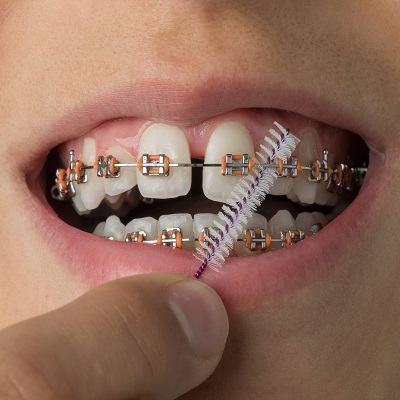After undergoing orthodontic treatment with Dental Braces Dubai, you may feel relieved to finally have your braces removed and to see your beautifully aligned smile. However, it’s crucial to understand that the journey doesn’t end there. Retainers play a vital role in maintaining the results achieved with braces. Failing to wear your retainer as directed can lead to several consequences that can jeopardize your orthodontic investment.
The Importance of Retainers:
Retainers are custom-made devices designed to hold your teeth in their new positions after the removal of braces. The primary function of a retainer is to prevent your teeth from shifting back to their original misalignment.
How Retainers Work:
When you wear a retainer, it applies gentle pressure to keep your teeth in their new position. This is crucial because teeth have a natural tendency to drift back to their original positions after braces are removed. Retainers can be removable or fixed, depending on your orthodontist’s recommendation.
Consequences of Not Wearing Your Retainer:
Not wearing your retainer can lead to several undesirable outcomes, affecting both your smile and your overall dental health.
1. Teeth Shifting:
The most immediate consequence of not wearing your retainer is the shifting of your teeth. Orthodontic treatment changes the alignment of your teeth and their supporting bone structures. If you don’t wear your retainer, your teeth can begin to move back to their original positions, negating the effects of the braces.
How Quickly Does Shifting Happen?
Some patients may notice changes within a few weeks of not wearing their retainer, while others may take longer. However, the risk of shifting increases significantly over time.
2. Relapse of Orthodontic Treatment:
Relapse occurs when the teeth move back to their previous positions, which means that all the time, effort, and money invested in your orthodontic treatment may be wasted. This can lead to dissatisfaction with your smile and the potential need for further orthodontic treatment.
Need for Additional Treatment:
If your teeth shift significantly, you may need to undergo additional braces or aligner treatment, leading to more expenses and time.
3. Changes in Bite Alignment:
A change in tooth position can also impact your bite alignment. If your teeth shift after braces, you may experience an improper bite, which can cause problems with chewing and speaking.
Impact on Oral Function:
A misaligned bite can lead to discomfort and difficulties in daily activities, such as eating and talking.
Other Potential Issues:
Apart from the aesthetic concerns, there are other potential issues that can arise from not wearing your retainer.
1. Increased Risk of Dental Problems:
Misaligned teeth can create spaces that are difficult to clean, increasing the risk of plaque buildup, cavities, and gum disease. When teeth are not properly aligned, they can also put excessive pressure on certain areas of your mouth, leading to additional wear on your teeth.
Long-Term Oral Health Concerns:
Over time, these issues can result in serious oral health problems that may require further dental intervention.
2. Emotional Impact:
The journey to a perfect smile can be emotionally taxing. If your teeth shift back to their previous positions, it can lead to feelings of frustration and disappointment.
Boosting Self-Confidence:
Maintaining your results with a retainer helps preserve the confidence that comes with a beautifully aligned smile.
Best Practices for Retainer Use:
To ensure the longevity of your results, it’s essential to follow your orthodontist’s instructions regarding retainer use.
1. Follow the Schedule:
Your orthodontist will provide a specific schedule for wearing your retainer after braces. It’s crucial to adhere to this schedule for optimal results.
Initial Period:
Typically, retainers should be worn full-time for a period of time (often several months) before transitioning to nighttime wear.
2. Maintain Good Oral Hygiene:
Keeping your retainer clean is vital for your oral health. Food particles and bacteria can accumulate on your retainer, leading to potential dental issues.
Cleaning Your Retainer:
Use a soft toothbrush and mild soap to clean your retainer regularly. Avoid hot water, which can warp the retainer.
3. Regular Check-ups:
Schedule regular follow-up appointments with your orthodontist to monitor your progress and address any concerns.
Importance of Check-ups:
These visits allow your orthodontist to assess your bite and ensure that your teeth remain in their optimal positions.
Conclusion:
Wearing a retainer after braces is a crucial step in maintaining your new smile. By understanding the importance of retainers and the potential consequences of not wearing them, you can make informed decisions that benefit your oral health. Don’t overlook this essential part of your orthodontic journey—commit to wearing your retainer as directed and protect the investment you made in your smile with dental braces in Dubai. With proper care and dedication, you can enjoy the benefits of a beautiful, aligned smile for years to come.





Comments